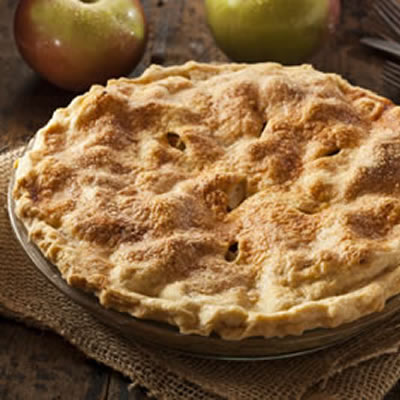Shortening
Also known as Crisco® or Fat
What is Shortening?
Shortening is an edible fat that is solid at room temperature. It shortens the gluten strands in wheat, which provides three textural attributes in baked goods:
- A short bite
- A lubricative moist texture
- The crunchy or crispy auditory sounds
When used in a product, or a the medium to be cooked in, these three textural characteristics are heightened.
Because shortening provides the breakage in or ‘shortens’ the gluten-starch network, it reduces starch retrogradation in baked goods. Since it is 100% fat, as opposed to the 80% fat content of butter, it aids in producing a very tender baked product.
Origin
Shortening is created from liquid oil by hydrogenation. Hydrogenation is the process of adding extra hydrogen atoms to the vegetable fats, consequently turning them into solids from a liquid state. In short, turning previously unhydrogenated oil into a partially-hydrogenated oil (PHO) with trans fatty acids.
Not all shortening is made with trans fatty acids. Trans fat free varieties can be produced by enzyme catalyzed interesterification1 or fully hydrogenation oil blending with other oils.
Function
It’s main use is to shorten baked goods like pastries and pie crusts to create a tender and flaky final product. This is accomplished by preventing the cohesion of wheat gluten strands during mixing, this action physically shortens the strands of gluten resulting in a less elastic and sticky protein.
Shortening is great for frying. Since it has a low percentage of unsaturated fatty acids, it shows higher resistance to oxidation and rancidity than alternative typical vegetable oils that may be used for frying. It’s also a good vehicle for delivering flavor as well as richness to bread and cakes.
Shortening is used for creaming due to its ability to incorporate large volumes of air bubbles. This creates a fine, delicate structure in the end product.
In cake making, it is used to tenderize the product by incorporating air in the finished cake batter as well as lubricating the other ingredients allowing the cake to rise more freely and increase the shelf life of the product.
Application
Shortening has the biggest range in application for cookie formulas, ranging from 30-85% (sugar to oatmeal cookies). In bread formulas, it can be used anywhere from 3-5% to improve slicebility, moistness, volume and oven spring of the product.2 In yeasted donuts, the levels can be as high as 12%. In cake donuts, it can range from 5-8%. It can be as high as 50% for yellow layer cake formulas. In pastry products, its use can be as high as 60%.
For cakes and cookie systems that use a high level (>30%), it is better to cream it with the sugar using a paddle in the mixer. This is to ensure proper distribution and aeration of the fat molecules.
Since shortening is non-dairy (dairy is an allergen commonly unacceptable in many bakeries), it is used to replace butter. If there is a need to replace 100g butter, use 80g shortening to obtain similar results.
Types/Variations
- Solid: Recommended for use in pastries, pie crusts and bread.
- Liquid: Mainly used in recipes that call for melted shortening, such as cake and bread formulas.
- All-purpose: Non-emulsified hydrogenated shortening. Used successfully in hi-ratio cakes with the addition of emulsifiers.
- Cake or icing shortening: All-purpose hydrogenated shortening with one or two combinations of emulsifiers added by manufacturer. Emulsifiers blended into a shortening assist in forming an emulsion allowing the baker to add more water to the cakes. In this way, it improves the eating qualities of the finished cake by retaining more moisture.
FDA Regulation
Though not all shortening is PHO, FDA regulated that Partially Hydrogenated Oils (PHOs) are not of GRAS status since June 16, 2015.3 This action is to reduce the trans fat consumption.
References
- Lee, Jeung Hee, Casimir C. Akoh, and Ki-Teak Lee. “Physical Properties of Trans-Free Bakery Shortening Produced by Lipase-Catalyzed Interesterification.” Journal of the American Oil Chemists’ Society 85.1 (2007): 1-11.
- Chin, Nyuk Ling, Russly Abdul Rahman, Dzulkifly Mat Hashim, and Shin Yueh Kowng. “Palm Oil Shortening Effects on Baking Performance of White Bread.” Journal of Food Process Engineering 33.3 (2009): 413-33.
- Center for Food Safety and Applied Nutrition. “Food Additives & Ingredients – Final Determination Regarding Partially Hydrogenated Oils (Removing Trans Fat).” U S Food and Drug Administration Home Page. 17 Mar. 2017. www.fda.gov/Food/IngredientsPackagingLabeling/FoodAdditivesIngredients/ucm449162.htm. Accessed 08 June 2017.


